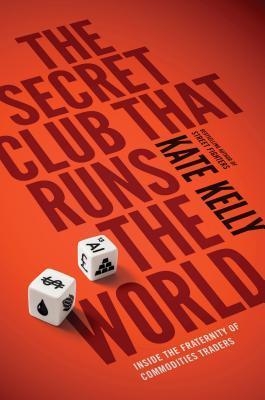The Secret Club That Runs the World: Inside the Fraternity of Commodities Traders by Kate Kelly

1
THE BUBBLE
Pierre Andurand was so comfortable with his $8 billion crude-oil
position that he spent the first half of his day doing a hard-core
workout with his personal trainer, casually reading the news on a
Bloomberg computer terminal, and munching on lean protein and toast at
his London town house. It was May 5, 2011, Osama bin Laden had just
been killed, and political instability in the Middle East seemed guaranteed
to raise energy prices.
Andurand made the short walk to his hedge-fund office at midday. Brent
crude-oil futures, the commodity market based on petroleum drilled in
Europe’s North Sea that he followed most closely, had been hovering in the
low $120s that morning, which annoyed him. He’d been betting for weeks
that oil would trade higher, but prices had not obliged. Still, with the U.S.
markets having only recently opened for the day and the amount of trading
still a bit light, he kept a previously scheduled meeting with the author of a
book series called Market Wizards in a conference room downstairs from
his trading desk.
An hour or so into the meeting, Andurand got an urgent e-mail from one
of his traders, who had returned from a coffee break to find the Brent
market down $2.50. That was a big move for a single afternoon in London,
let alone for a fraction of an hour. The trader was baffled.
Andurand wasn’t worried. The oil market was a volatile beast, he knew,
and such fluctuations weren’t unprecedented. He’d always played them to
his advantage, even awakening one time from surgery to find that Brent had
risen $10, just as he’d predicted. He kept chatting with the writer, telling
him about his philosophy on trading and how he’d applied it at his hedge
fund, BlueGold Capital Management, which had been celebrated for having
predicted both the high point and the low point of the crude-oil market in
2008. It was a call that had established the firm as one of the most
successful commodity hedge funds of all time.
E-mails from upstairs began flooding in. The Brent drop had widened
another fraction of a dollar, then another dollar. Andurand’s team was
scouring the trader chat rooms and the Internet for information that would
explain the sell-off—a production hike by OPEC? A release of the U.S.
Strategic Petroleum Reserve?—but there was none to be found. Meanwhile,
BlueGold was losing hundreds of millions of dollars. Andurand couldn’t
focus. “Why are you looking at your BlackBerry?” the writer finally asked
him.
Andurand ended the meeting and rushed upstairs. His two young traders,
Neel Patel and Sam Simkin, were sitting at their computers, looking
anxious. Brent futures had fallen several dollars in an hour, and their
downward spiral was weighing on other parts of the market too. It was a
level of distress the thirty-four-year-old Andurand, who had been trading
energy products daily for more than a decade, had rarely seen. He called a
few other traders to ask what was happening. He instant-messaged a few
more. Nobody had a clue.
Whatever it was, it was bad for BlueGold. Andurand and his partners
had used complex trades to build a position three times as large on paper as
the $2.4 billion in assets they were managing, and it was set to maximize
profits as crude oil prices rose. But if crude fell sharply, as it did that day, it
could be disastrous for the hedge fund.
Andurand turned to his traders. “Sell a few hundred million worth!” he
said. “See how the market takes it.”
Clicking their mouse buttons furiously to finalize trades on their
computer screens, Patel and Simkin began selling off futures on Brent crude
as well as its U.S. counterpart, the West Texas Intermediate, or WTI, oil
contract, which was pegged to physical crude oil stored in Oklahoma.
Although crude was always subject to its own regional supply and demand
issues, jitters about the trajectory of prices tended to play out publicly in the
futures markets, where hedge funds like BlueGold made bets on whether
prices would stay low or high in the months and years to come.
The Secret Club That Runs the World: Inside the Fraternity of Commodities Traders by Kate Kelly




